The Basics of Strategic Planning
In the first lesson, you'll learn the ins and outs of strategic planning. You'll find out why you need to define your business in terms of the customer and why you must have the right ingredients in place to meet customer demands. The lesson will discuss how environmental factors, such as technology and economics, shape your company. You'll also see how the internal environment determines how well your organization responds to opportunities and threats.
Strategic Plan Implementation
Memorize the phrase, "Plan your work and work your plan" because it has great applicability to strategic planning. You'll begin this lesson by learning about the elements you must use to effectively implement your strategic plan. You'll study vision statements, move on to purpose and mission statements, and discuss goals, objectives, strategies, policies, and procedures. Next, you'll focus on company culture and find out why planning is beneficial. Finally, you'll look at the major strategic choices that you can choose from, ranging from core business focus to insolvency.
Organizational Concepts
Organizing is a critical topic that many companies struggle with. Once you have a good idea of how to develop and implement a strategic plan, you need to take the next step. This lesson will discuss how to organize resources so employees can perform job duties and relate to one another in the most effective way possible. You'll learn the purpose of organization and present several coordinating principles, including authority, power, and span of control. You'll also spend time exploring the staffing function and evaluate the elements—recruitment, selection, appraisal, and development—and study six different forms of organizational charts.
Motivation, Leadership, and Control
This lesson will discuss three key management principles: motivation, leadership, and control. Motivation and leadership, as compared to control, represent a more subtle side of business. While control focuses on concrete things such as analysis and procedures, motivation and leadership rely on less tangible factors. You'll begin the lesson by defining motivation, exploring four theories of motivation, and then moving into leadership. You'll learn about the types of leadership and see how delegation and empowerment differs. You'll finish up by investigating control and learning how to effectively use three different control processes.
Overview of Accounting
This lesson and the next four to follow will help you increase your mastery of financial fundamentals. It's important that you increase your readiness to use financial information to identify and understand problems and opportunities, and also make decisions. The lesson will discuss the elements of the general ledger, explore a few key accounting terms, contrast accounting and bookkeeping, and investigate the different types of accounting. You'll learn about vital accounting concepts, such as the accounting equation, debits and credits, and the cost principle.
Statements and Cash Flow
Now that you have the basics of accounting safely under your belt, it's time to start looking at how to apply financial information. You'll start off by reviewing two financial statements that you find at nearly every organization—the balance sheet and the income statement. Without these two documents, it's impossible to determine how a firm is performing. After you learn about the balance sheet and the income statement, you'll also learn how to account for inventories and understand about the significance of cash flow. The lesson will explain why sound cash management helps any company stay on the right path.
Cost Concepts
Cost is the price you pay to acquire, maintain, produce, or use materials or services. Since most firms account for their operations at cost, it's essential that you understand how costs are determined and used. This lesson will discuss the nature of discretionary, relevant, sunk, and variable costs, and many more. You'll also discover how managerial accounting differs from financial accounting.
Financial Planning and Investing
The largest investment that many businesses make is in their land and buildings. Firms also make smaller, more frequent investment decisions for items such as equipment and fixture purchase and replacement. In this lesson, you'll learn about the different types of investment decision-making models, including average rate of return (ARR), payback period, discounted cash flow (DCF), net present value (NPV), and internal rate of return (IRR). You'll also examine the nuts and bolts of financial planning.
Budgeting
In the last lesson about financial matters, yo




